Walter Jacob
Rita L. Jacob
According to census records, Walter was the youngest of eight children, his parents Samuel and Sarah Jacob having three daughters and five sons. Coming from a large family, there should have been a plethora of memories about Walter, particularly as Samuel outlived his son by nearly three decades. Unfortunately, however, after Walter’s death, his widow, Maud, had little contact with her in-laws, becoming more insular as her health deteriorated. Also, her children, Ken and Nora, were too young to have had many memories of their own, Ken rarely mentioning his father. Nora was more forthcoming and it is through her that we have a few photographs, some postcards sent during the First World War and Walter’s watch.
Eliza, Sarah’s and Samuel’s eldest child, was born circa 1877, being four years old at the time the census was taken in 1881. Elizabeth, Arthur, Florence, Ernest and Francis were Walter’s other siblings, the intervals between their births ranging from a year to three years. At the time of Walter’s birth in 1893, the Jacob family was living in the village of Bishopstone, Samuel working as an ‘agricultural labourer’. Eliza and Elizabeth, however, had already left home, presumably married or ‘in-service’.
By 1901, however, Samuel and Sarah had moved into Salisbury and were living with their four youngest children at 23 Milford Hill, there being no mention of Arthur or Florence in the census entry. Samuel now described himself as a ‘non domestic stableman’, someone else later adding the word ‘groom’. Ernest and Albert had also left school and were now working, Francis and Walter being the only offspring still in full time education. We know that both the youngest boys attended St. Martin’s School in St. Martin’s Church Street as their names appear in an old register, now archived in Trowbridge.
During the next decade, Ernest joined the Dragoon Guards, Albert married and Francis moved to Glamorgan, working underground in one of the collieries. Therefore, in 1911, Samuel, Sarah and Walter were the sole occupants of the house in Milford Hill although Albert and his wife, Florence, lived just a few doors away in Number 28.
Walter, being the youngest and last to leave, seemed to have a special bond with his parents, Samuel and Sarah perhaps hoping that he would remain with them and be a support in their old age. In 1911, however, the eighteen year old Walter married Maud, the daughter of William Gardner, a self-employed shoemaker; their wedding taking place in the Methodist Chapel in St. Edmund’s Church Street.
As Maud was two years older and ‘in service’, the Jacob family did not approve of the match, believing that she had ‘trapped’ Walter in order to escape domestic employment. Maud’s and Walter’s loving correspondence disproves this fact, Maud also being completely devastated when ‘her Wally’ died of pneumonia on 9 November 1918.
Despite Samuel and Sarah having the room to accommodate the couple, Walter and Maud went to live in Greencroft Street near Maud’s parents and some of her siblings. There a son, Kenneth, was born on 1 June 1913, a daughter, Nora, arriving two years later in July 1915.
In the census entry for 1911, Walter’s occupation is described as ‘a packer of wholesale goods’ this being changed to ‘grocer’s porter’ on his marriage certificate. We do not know how long he continued in this employment before enlisting in 1915 *, serving in the 11th Field Company, Royal Engineers, Transport Division during the First World War.
As most Salisbury men were drafted into the Wiltshire Battalions, it is strange that Walter was assigned to a very different regiment, particularly as the 11th Field Company had been part of the British Expeditionary Force sent to France in August 1914. It is possible, however, that Walter was one of the men sent to replace casualties sustained by the 11th Field Company, the latter being involved in a number of major battles including those at Mons, Marne, Aisne and Ypres.
Despite researching the various ancestry and forces sites, Walter’s army record remains elusive, either being one destroyed during the 1930s or lost when the place of storage burnt down. Looking at the postcards in albums belonging to his children, it is evident that Walter spent some time in France; there also being a small photograph, of a soldier in a devastated landscape, enclosed in a birthday card.
While serving with the Royal Engineers, Walter had the rank of ‘Driver’ but, as he is wearing spurs in a studio photograph, it is likely that he worked with horses rather than motor vehicles. Also, in this particular photograph, he looks much older than a man in his twenties, resembling his son when the latter was in his mid-forties.
Towards the end of 1918, Walter was back with his family in Greencroft Street, the military bearers dropping him as they manoeuvred the stretcher down the narrow stairs. Although Maud wrote to the Red Cross Office in Salisbury Infirmary, requesting the chevrons from Walter’s uniform, it is likely that he was taken to one of the military hospitals around the city. Nora sometimes pointed out a large house while we were travelling on the top deck of a bus. This was either on the route to Southampton or the one to Bournemouth, it now being difficult to identify the building because road systems have changed in the intervening years.
After Walter’s death, Maud’s health deteriorated and she became increasingly reliant on her family and religion, like many other people, patronising several different churches and chapels in the area. At some point, she and her children moved to a new council house in Wessex Road but had to relocate because of the steep hills around it, Maud dying in Rampart Road in 1946. Ken married in August 1947 but Nora remained single all her life, living with her brother and sister-in-law until the bedroom was required for their youngest child in the 1960s.
My sister and I, being Ken’s children, often accompanied our father and Nora to London Road Cemetery to put flowers on Maud’s grave, always believing that she had been buried with Walter. Later, having purchased the plots, Ken and Nora were buried on either side of this grave, the close knit family appearing to be finally reunited. Recently, however, while searching for these graves, we discovered that Maud and Walter had actually been buried in two different sections of the cemetery, his parents, Samuel and Sarah, occupying the plot next to Walter’s Commonwealth War Grave headstone!
The disappearance of Walter’s medals and ‘Dead Man’s Penny’ is also a mystery; these last being seen in the smallest bedroom of Rampart Road before it was renovated. As Nora intended to give these to her cousin’s son, we never even knew they were missing, presuming they were safe with Peter! Their return during this anniversary year was particularly poignant and we will be always grateful to their custodians!
* According to one genealogy source, Walter enlisted in Salisbury in 1915 but we cannot verify this date.

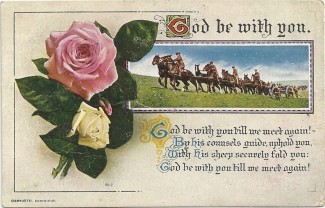
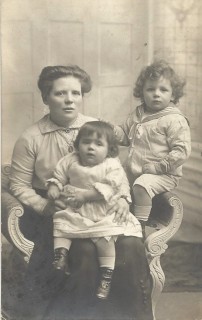
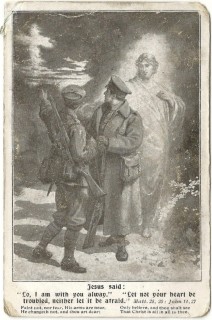
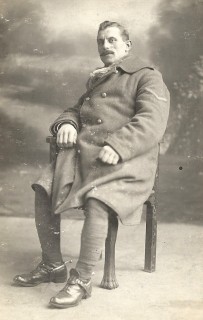
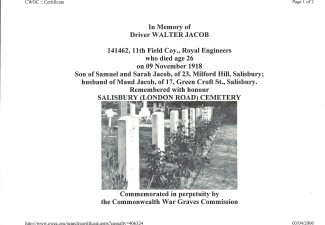
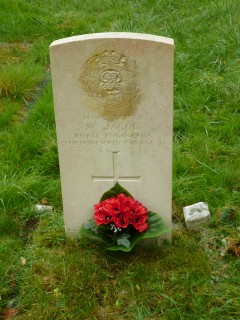

No Comments
Add a comment about this page